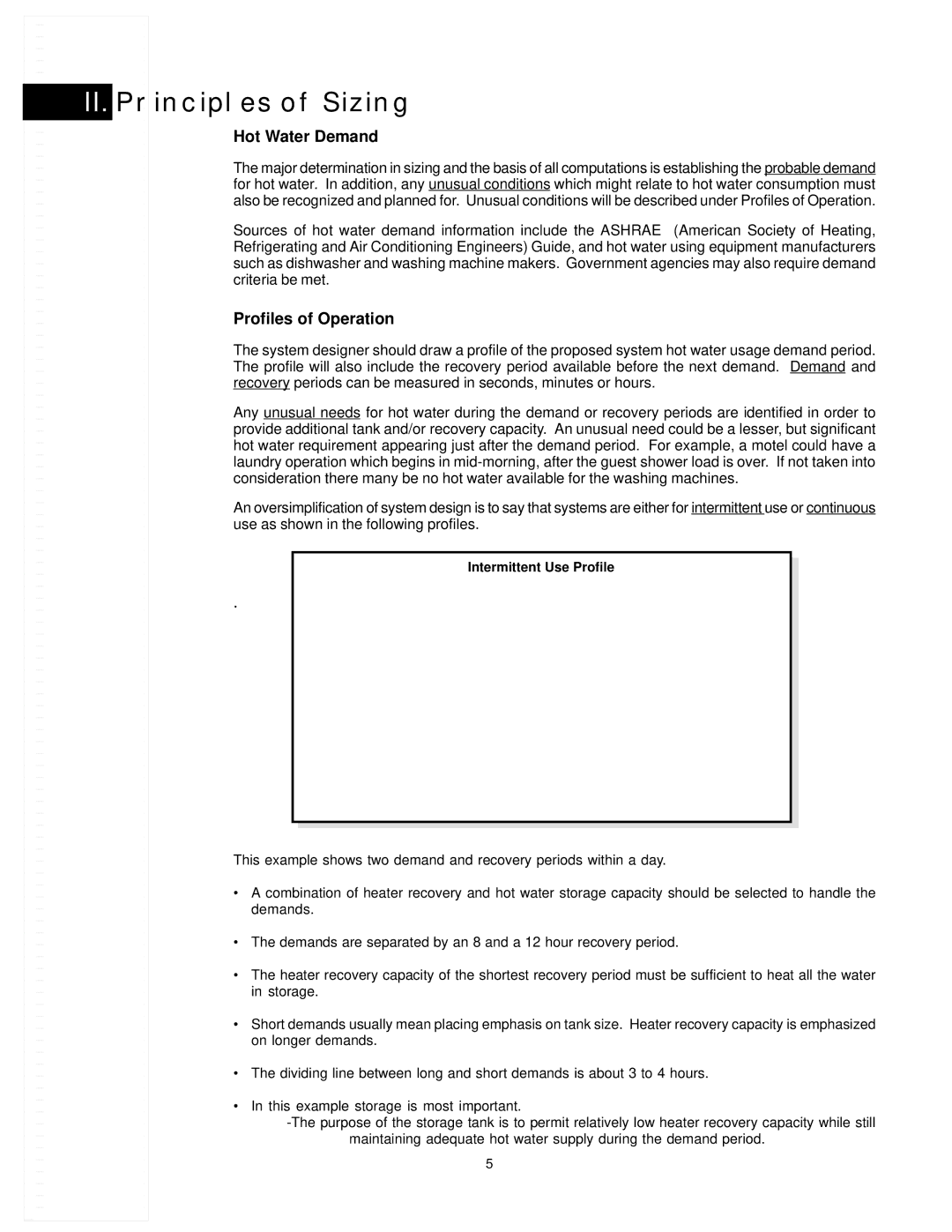
II.Principles of Sizing
Hot Water Demand
The major determination in sizing and the basis of all computations is establishing the probable demand for hot water. In addition, any unusual conditions which might relate to hot water consumption must also be recognized and planned for. Unusual conditions will be described under Profiles of Operation.
Sources of hot water demand information include the ASHRAE (American Society of Heating, Refrigerating and Air Conditioning Engineers) Guide, and hot water using equipment manufacturers such as dishwasher and washing machine makers. Government agencies may also require demand criteria be met.
Profiles of Operation
The system designer should draw a profile of the proposed system hot water usage demand period. The profile will also include the recovery period available before the next demand. Demand and recovery periods can be measured in seconds, minutes or hours.
Any unusual needs for hot water during the demand or recovery periods are identified in order to provide additional tank and/or recovery capacity. An unusual need could be a lesser, but significant hot water requirement appearing just after the demand period. For example, a motel could have a laundry operation which begins in
An oversimplification of system design is to say that systems are either for intermittent use or continuous use as shown in the following profiles.
Intermittent Use Profile
.
This example shows two demand and recovery periods within a day.
•A combination of heater recovery and hot water storage capacity should be selected to handle the demands.
•The demands are separated by an 8 and a 12 hour recovery period.
•The heater recovery capacity of the shortest recovery period must be sufficient to heat all the water in storage.
•Short demands usually mean placing emphasis on tank size. Heater recovery capacity is emphasized on longer demands.
•The dividing line between long and short demands is about 3 to 4 hours.
•In this example storage is most important.
123456789011 | 5 |
